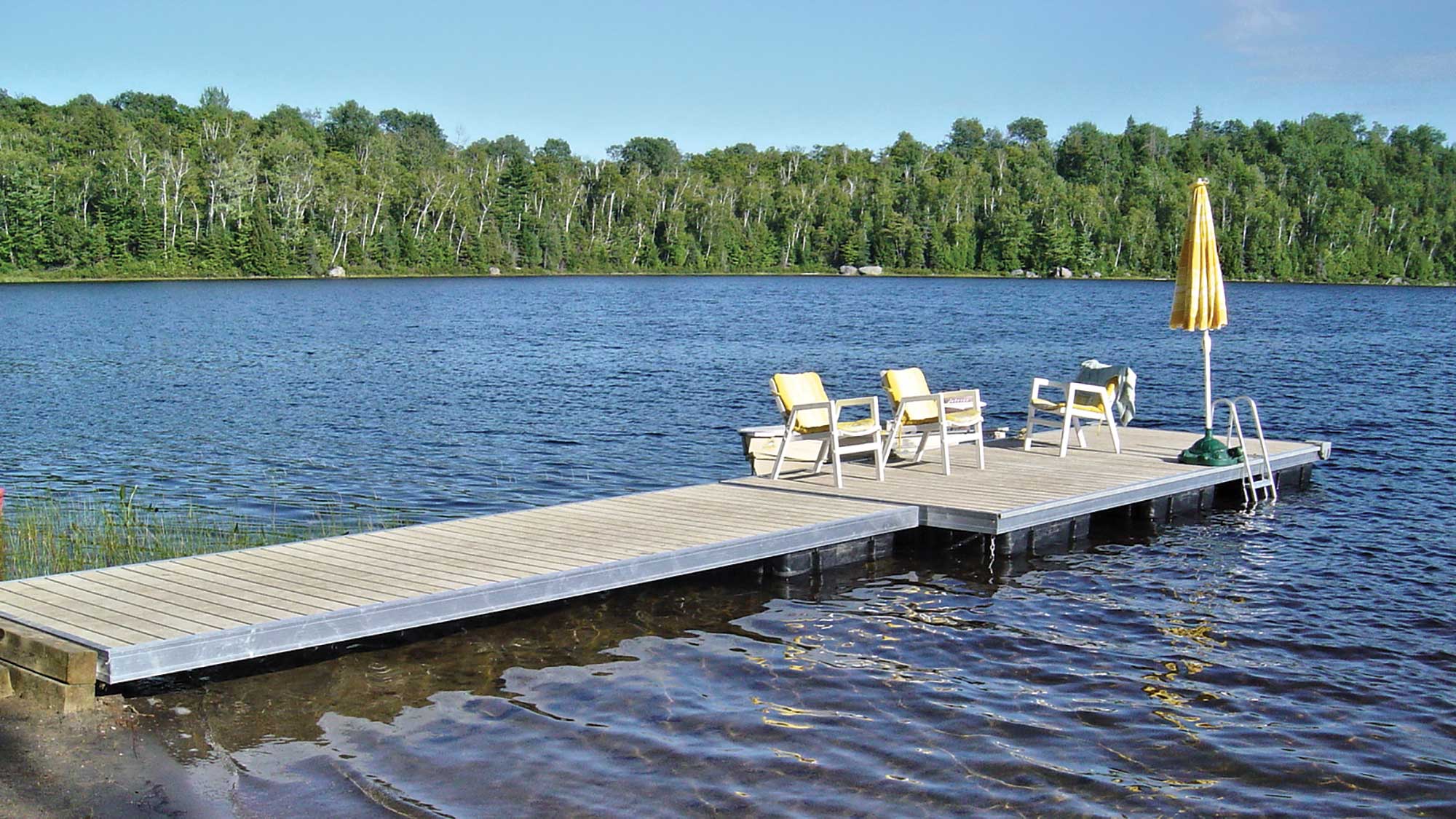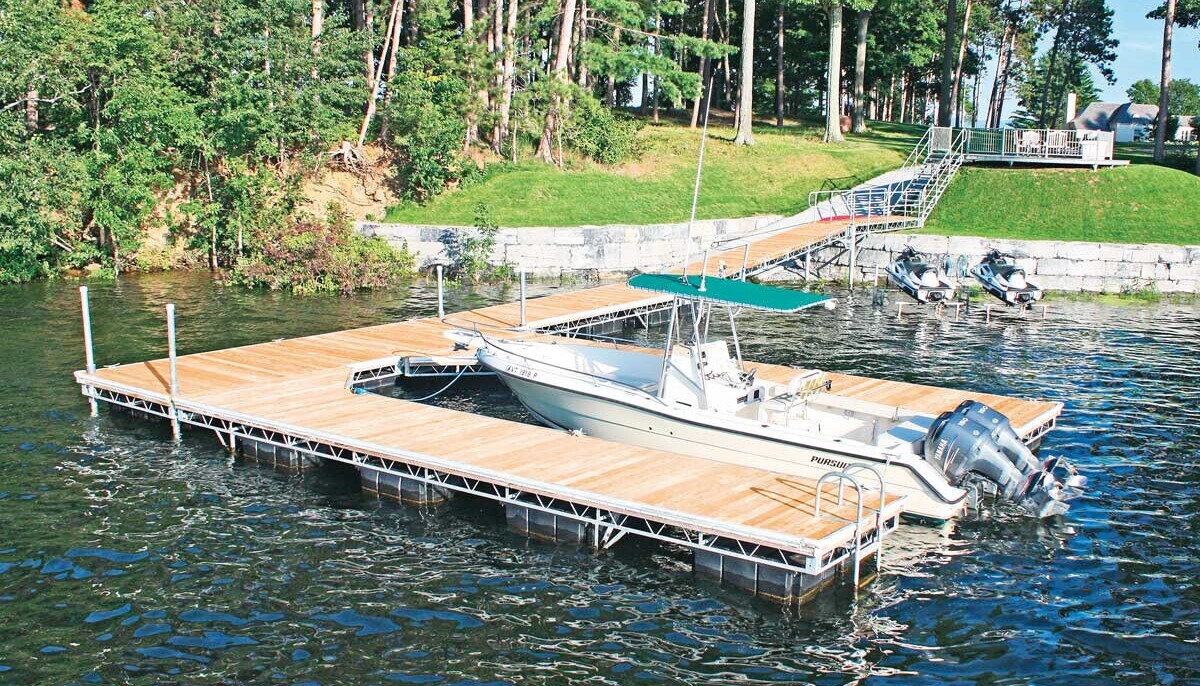Navigating the Options: Choosing the Right Dock Company for Your Floating Dock Project
Navigating the Options: Choosing the Right Dock Company for Your Floating Dock Project
Blog Article
Produce the Perfect Docking Option With Floating Docks
Floating docks present a flexible remedy for a range of maritime needs, adjusting seamlessly to rising and fall water degrees and diverse vessel types. Their modular nature allows for quick installation and moving, yet the option of proper products and layout functions is critical for making sure both performance and visual allure. As we explore the crucial components that add to the effectiveness of floating docks, several crucial aspects pertaining to stability and maintenance will certainly emerge, raising inquiries concerning exactly how to optimize your docking experience. The subsequent conversation will certainly brighten these crucial factors to consider.

Benefits of Floating Docks
Floating docks offer numerous benefits that make them an excellent option for various maritime applications. Unlike repaired docks, floating docks increase and loss with the trend, ensuring consistent ease of access for vessels.
In addition, floating docks are normally much easier and quicker to install contrasted to standard fixed structures. Their modular style permits for uncomplicated setting up and disassembly, promoting upkeep and relocation when necessary. This adaptability is especially advantageous for short-term applications or in settings where conditions might change.
Floating docks additionally tend to be a lot more eco-friendly, as they minimize disturbance to the seabed and surrounding aquatic ecosystems. Their resilient nature decreases the risk of damage to aquatic life, promoting a much healthier environment. Additionally, these docks can be customized to fit various vessel dimensions, guaranteeing that they satisfy details functional requirements - floating dock company.
Eventually, the combination of flexibility, ease of installment, and environmental factors to consider makes floating docks a very reliable remedy for a large range of maritime demands.
Choosing the Right Products
Choosing the appropriate products for floating docks is essential to guarantee long life, longevity, and stability. The selection of products straight impacts the dock's efficiency in different ecological problems, consisting of exposure to water, sunlight, and potential wear from marine traffic.
Common products utilized for floating docks include aluminum, wood, and high-density polyethylene (HDPE) Light weight aluminum is light-weight, corrosion-resistant, and needs very little maintenance, making it an exceptional selection for long life. However, its first expense can be greater contrasted to other products.
Wood, while aesthetically enticing and supplying a traditional look, can be vulnerable to rot and insect damage otherwise effectively dealt with. Therefore, using pressure-treated wood or normally sturdy species like cedar or redwood can alleviate these issues.
HDPE is a prominent selection as a result of its resistance to UV rays and chemicals, along with being eco-friendly. dock company. It is light-weight and available in numerous shades, enabling modification
Eventually, the right material selection will rely on specific requirements, consisting of budget, desired aesthetic appeals, and ecological considerations. Mindful analysis of these elements will certainly result in a successful and durable floating dock service.
Layout Considerations for Security
When making floating docks, guaranteeing security is an essential facet that can significantly influence their capability and security. Stability in floating dock design top article is affected by different aspects, including buoyancy, weight circulation, and the arrangement of components.
Weight circulation is crucial; uniformly distributing tons across the dock protects against turning and improves stability. Broader styles can provide raised security, specifically in rough water problems, while longer docks might call for additional assistances to stop drooping.
One more key consideration is the environmental influence, consisting of wave activity and wind. Integrating attributes such as sidewalls or skirting can aid minimize the effects of environmental pressures, keeping stability in damaging conditions. Inevitably, a combination of thoughtful style, product option, and understanding of ecological variables will certainly generate a floating dock that satisfies both security and security requirements.
Installment Tips and Techniques

Following, secure the necessary authorizations and follow local guidelines, which may determine installment methods and environmental factors to consider. Involve a certified contractor experienced in floating dock installations if required. Use high-quality products made for marine environments to enhance resilience and longevity.
When positioning the dock, align it alongside the shoreline to help with very easy gain access to. Make sure that the anchoring system is robust, using concrete like this blocks or helical supports to support the dock against wind and wave action. It's vital to account for seasonal water level fluctuations, consisting of potential ice movement in chillier climates.
During the installment, confirm the dock's floatation and stability prior to settling the anchoring. Consistently inspect the setup for any indicators of wear or damages. By adhering to these methods and suggestions, you can attain a safe, practical, and aesthetically pleasing floating dock installation that fulfills your needs.
Maintenance and Care Standards
Caring and maintaining for floating docks is critical to extending their lifespan and making certain secure usage. Normal evaluations must be conducted to identify any indicators of wear, damages, or aquatic development. Seek cracks, loose installations, or blemished areas on the dock's surface, as these issues can endanger architectural honesty.
Cleaning up is essential. Use a pressure washing machine to eliminate algae, barnacles, and debris, which can gather in time. For persistent development, think about ecologically pleasant cleaner that won't damage aquatic life.
Additionally, examine the mooring lines and supports often to guarantee they are totally free and secure from deterioration. Change any torn or damaged lines without delay to keep stability.
During extreme weather condition, such as tornados or freezing problems, take preventive actions. Secure the dock with extra mooring lines and, if feasible, get rid of any detachable elements to stop damage.
Verdict
To conclude, the application of floating docks provides a functional and effective docking solution suitable for various maritime applications. Their versatility to varying water levels, incorporated with a click here now modular style, permits for easy customization and moving. Picking appropriate products improves both longevity and aesthetic allure, while careful factor to consider of stability guarantees safety and durability. With correct installation and regular maintenance, floating docks can offer trustworthy and reliable docking experiences for a wide variety of vessels.
As we discover the crucial aspects that contribute to the efficiency of floating docks, a number of essential elements pertaining to security and maintenance will arise, increasing inquiries regarding how to optimize your docking experience. Unlike fixed docks, floating docks surge and fall with the tide, guaranteeing consistent ease of access for vessels.When developing floating docks, ensuring stability is a basic element that can dramatically influence their functionality and safety. Stability in floating dock layout is affected by different variables, consisting of buoyancy, weight circulation, and the arrangement of elements. Inevitably, a mix of thoughtful design, material option, and understanding of environmental aspects will yield a floating dock that satisfies both security and safety requirements.
Report this page